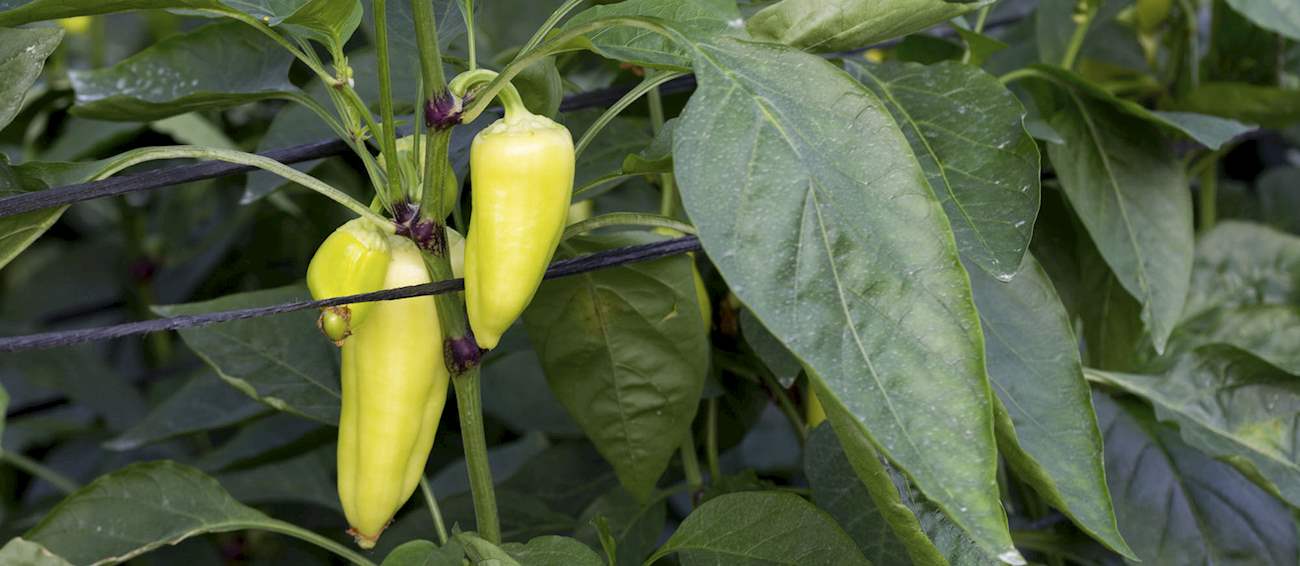Best Hungarian Vegetable Types
Makói hagyma is a strong tasting, round onion from the Makó region in Hungary that has a very high dry matter percentage and firm, white flesh. The town of Makó is also called the "Hungarian onion capital", and holds an annual Onion Festival where one can sample tasty dishes made with these onions - bread, strudels, scones and others.
The high dry matter content in the onion is due to the dry weather season at the end of summer, resulting in an onion which does not spoil easily and has a long shelf life. Its skin is bronze-red in colour and its strong, hot taste is owed to the high amounts of allyl sulphide (a colourless liquid with an intense smell)found in the Makoi hagyma.
Szentesi paprika is a collective name for the forcibly grown peppers of four different varieties of Capsicum Annuum. First are white peppers; smooth skinned and shiny, conically shaped with a strong paprika smell and mild flavour. White peppers are intended to be stuffed, either with meat, rice, or both.
The next variety is pointed hot peppers which are shiny, smooth, long and pointy in shape, green in colour and with a spicy flavour. Kapia peppers are conical, smooth, shiny, dark red in colour, and sweet and mild in terms of flavour. The last variety are the tomato-shaped peppers, unique in their shape, deep red in colour, with a strong paprika smell and a mild taste.
Makói petrezselyemgyökér is a variety of parsley that is grown in the Hungarian county of Csongrád. Its root has a smooth surface and dense texture, with white flesh that has a slightly sweet and pleasant flavor.
Before being sold, makói petrezselyemgyökér is soaked, washed in a barrel, graded, sorted, packaged and, finally, dried. Due to the extremely high dry matter content, averaging at 35-40 %, makói petrezselyemgyökér has a very long shelf life.
Fertőd vidéki sárgarépa is a Hungarian carrot variety originating from the Győr-Moson-Sopron County in Hungary’s Western Transdanubia region. The carrots are cylindrical in shape and the root is bright red, smooth, unbranched, and long, without any cracks.
The flavor is slightly sweet and intense, making it different from most of the other carrot varieties. The soil on which these carrots grow is deep-layered, loose, and fresh, allowing the vegetables to grow smooth and deep roots. The region has abundant sunshine from spring to autumn, and the sunshine promotes sugar formation, which is the reason why these carrots have a unique and sweet flavor.
Hajdúsági torma is a horseradish from the Hajdúság area in Hungary that has thick, green leaves on the upper part and a cylindrical, brownish root while the flesh inside is white. It is distinctive for its rich, hot flavor and extreme quantities of vitamin C (sometimes up to 150 mg/100 g).
The method of production also distinguishes this product from others because it uses a special ridge planting method, and the harvesting of the roots takes place in October. It can be sold as whole individual roots, or more often, grated with vinegar and packed in foil sacks.
Hegykői petrezselyemgyökér is a Hungarian root parsley originating from the vicinity of Lake Fertő in Győr Moson Sopron County in the Western Transdanubia region. This root parsley is produced by growing the Petroselinum crispum L, and the varieties used include Berliner Halblang, Fakír, Eagle, and Arat.
The body is snow-white in color, smooth, and unbranched. The aromas and flavors are intensely spicy due to the soil and climate in the area in which it is grown. These factors also give the root a higher sugar content, as well as higher calcium and phosphorus values.
Best Hungarian Vegetable Producers
AWARDS

Great Taste Awards - 2 stars
2024, 2022
BEST Hodi Paprika Herbs and Spices
Best Hungarian Vegetables
AWARDS

Great Taste Awards - 2 stars
2024
TasteAtlas food rankings are based on the ratings of the TasteAtlas audience, with a series of mechanisms that recognize real users and that ignore bot, nationalist or local patriotic ratings, and give additional value to the ratings of users that the system recognizes as knowledgeable. TasteAtlas Rankings should not be seen as the final global conclusion about food. Their purpose is to promote excellent local foods, instill pride in traditional dishes, and arouse curiosity about dishes you haven’t tried.




